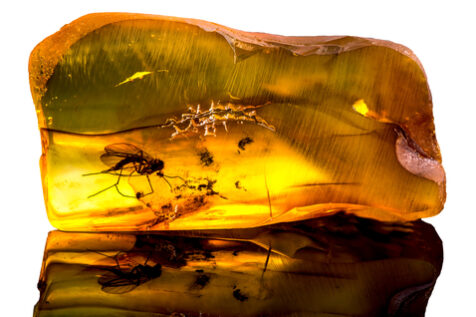What is the most efficient transmitter of disease in the animal kingdom? Dogs? Bats? Raccoons? Humans? The right answer, of course, is the female mosquito—no fur, no fangs, just a hypodermic needle with wings. She’s less than a quarter-inch long, has six legs, and is a BIG TIME disease spreader. She uses scent to find us, attracted by the lactic acid and other ingredients in perspiration. She also senses the carbon dioxide in our exhalations and follows the slipstream back to our faces. The more you sweat and pant as you shoo her away, the more attractive you become.
She’s not revolting to look at, but elegant, small, sleek, long-legged, and fragile. We might be willing to give her a milliliter of blood, even with the itchy welt, if we didn’t worry about what she might give back. The worst of the many pathogens a mosquito may carry is malaria, which kills more than 1 million people a year, two-thirds of those in sub-Saharan Africa and most being children under five.
There’s no sense trying to rehabilitate the reputation of such a creature; nobody loves a mosquito. However even the worst of the mosquitoes have their merit and are part of the necessary eco-system or ‘circle of life’ as they say in the Lion King. Even the blood-consuming mosquitoes don’t need it for every meal. In fact they suck most of their energy from flowers and plants and are useful as pollinators. The male mosquito, innocent except for his role in producing more females, is happy to subsist on nothing but nectar and plant fluids. One kind of mosquito with no interest in us is the most important pollinator of the rather pretty blunt-leaved orchid that grows in bogs of boreal forests. Another kind pollinates the Monkey-Face orchid, an endangered Appalachian species.
 Why can’t all mosquitoes be vegetarian? Eons ago, a primitive (perhaps far-sighted) mosquito may have mistaken a mammal for a plant and taken an accidental bite that led to a taste for blood. Now the females of those dangerous 80 species have evolved, like ticks, to use blood for producing eggs. The determined buzzing we hear outside (or inside) the tent is about the survival of the race. Mammalian blood carries a rich mix of protein, iron, fats, and sugar that triggers a mosquito’s ovaries. In as little as 90 seconds, she can take in as much as three times her weight in blood.
Why can’t all mosquitoes be vegetarian? Eons ago, a primitive (perhaps far-sighted) mosquito may have mistaken a mammal for a plant and taken an accidental bite that led to a taste for blood. Now the females of those dangerous 80 species have evolved, like ticks, to use blood for producing eggs. The determined buzzing we hear outside (or inside) the tent is about the survival of the race. Mammalian blood carries a rich mix of protein, iron, fats, and sugar that triggers a mosquito’s ovaries. In as little as 90 seconds, she can take in as much as three times her weight in blood.The first mosquitoes were here more than 200 million years ago, probably sipping on the nectar of the new flowering plants or the blood of dinosaurs. (In the movie Jurassic Park, dino-DNA was extracted from a mosquito sealed in amber.) How delighted they must have been some 190 million years later when we came along, almost fur-free and comparatively soft-skinned.
Then, as now, mosquitoes developed in standing water. And all too quickly: The blood-sucking insect can grow from an egg to an adult in just five days—and the eggs are plentiful. The malaria mosquito lays several hundred of them, one by one; other species drop rafts at a time. Their nursery-cum-swimming-pool can be as small as a discarded paper cup or a jar top, and it can be very polluted—pure sewage will do. A bristly mosquito larva, about 8 millimeters long, resembles an aquatic wirehaired dachshund or, if you prefer, a hairy maggot. Its head hangs down with its body suspended from the water surface by a breathing tube. As the snorkel takes in air, brushes filter the water for protozoans and bacteria.
CONTACT Holistic Pest Solutions to learn more about our treatment plans for mosquitoes or any other pests or give us a call at 434 842 1700. Whether you’re in Charlottesville, Waynesboro, or close by to either, Holistic Pest Solutions has the perfect plan for you that is as Green As You Wanna Be!
*Our Environmental Commitment: Holistic Pest Solutions is committed to the preservation of our environment. Our goal is to nurture the soils and plant life of lawns and landscapes. Utilizing holistic pest control practices that cause the least amount of impact on the environment.







